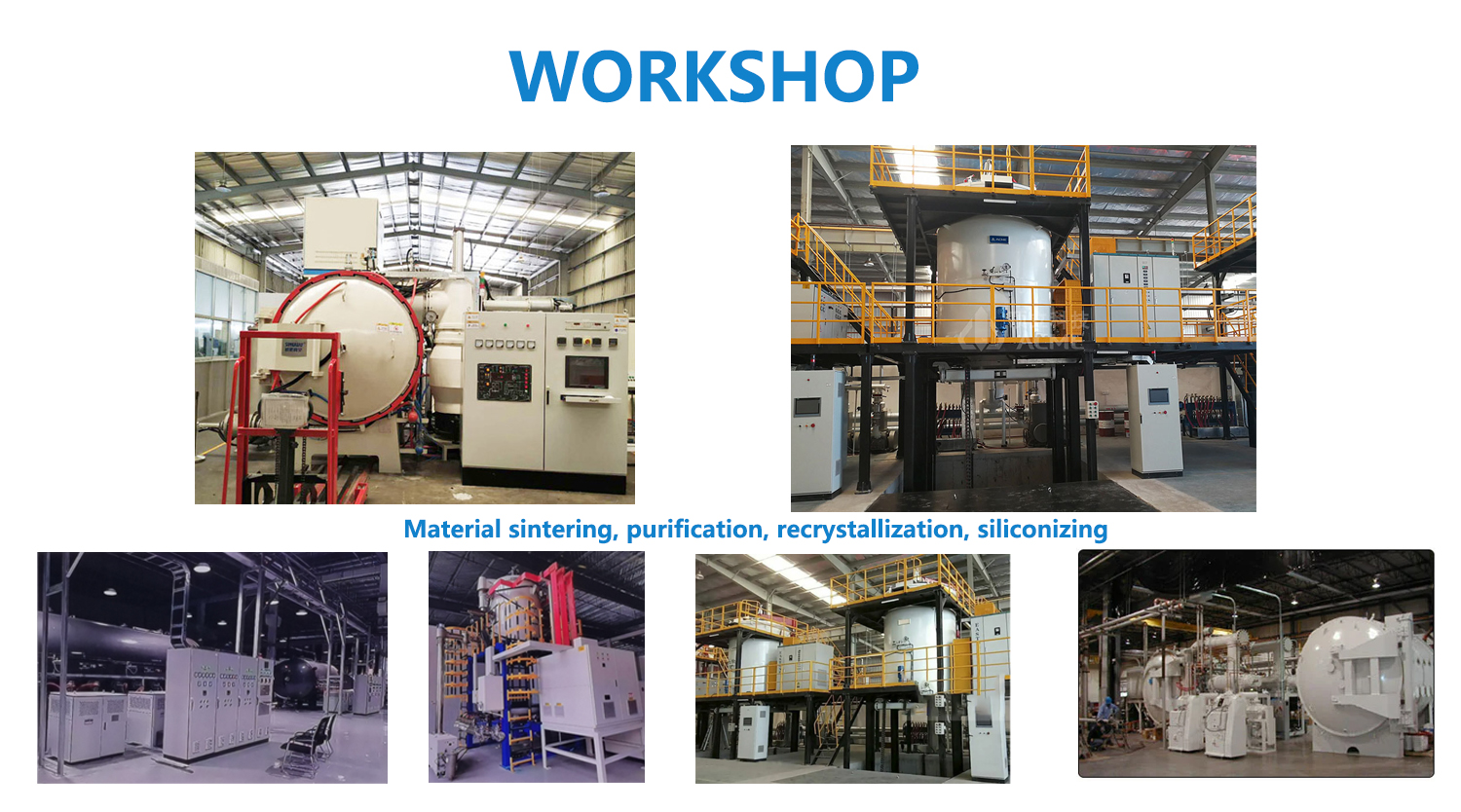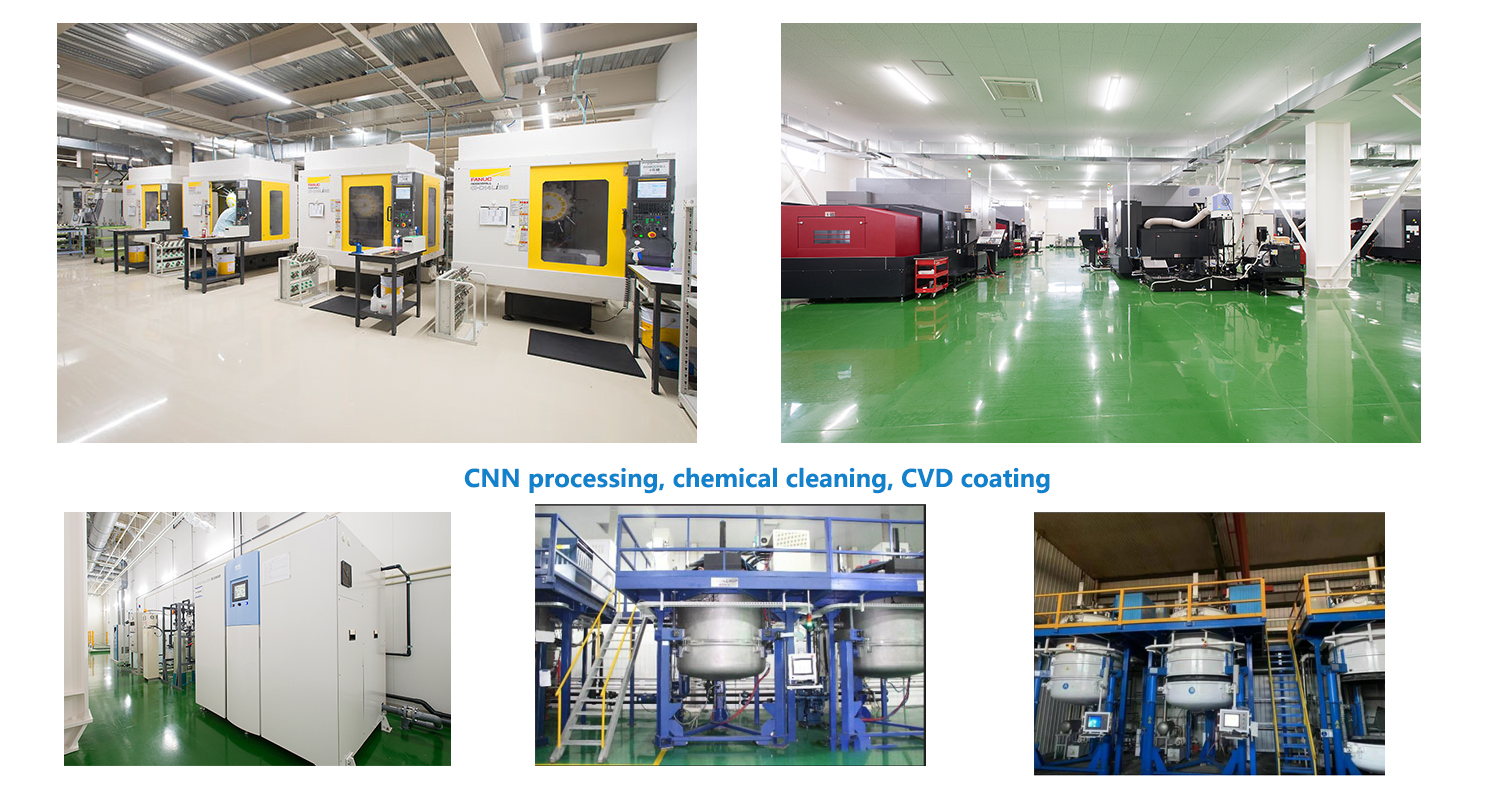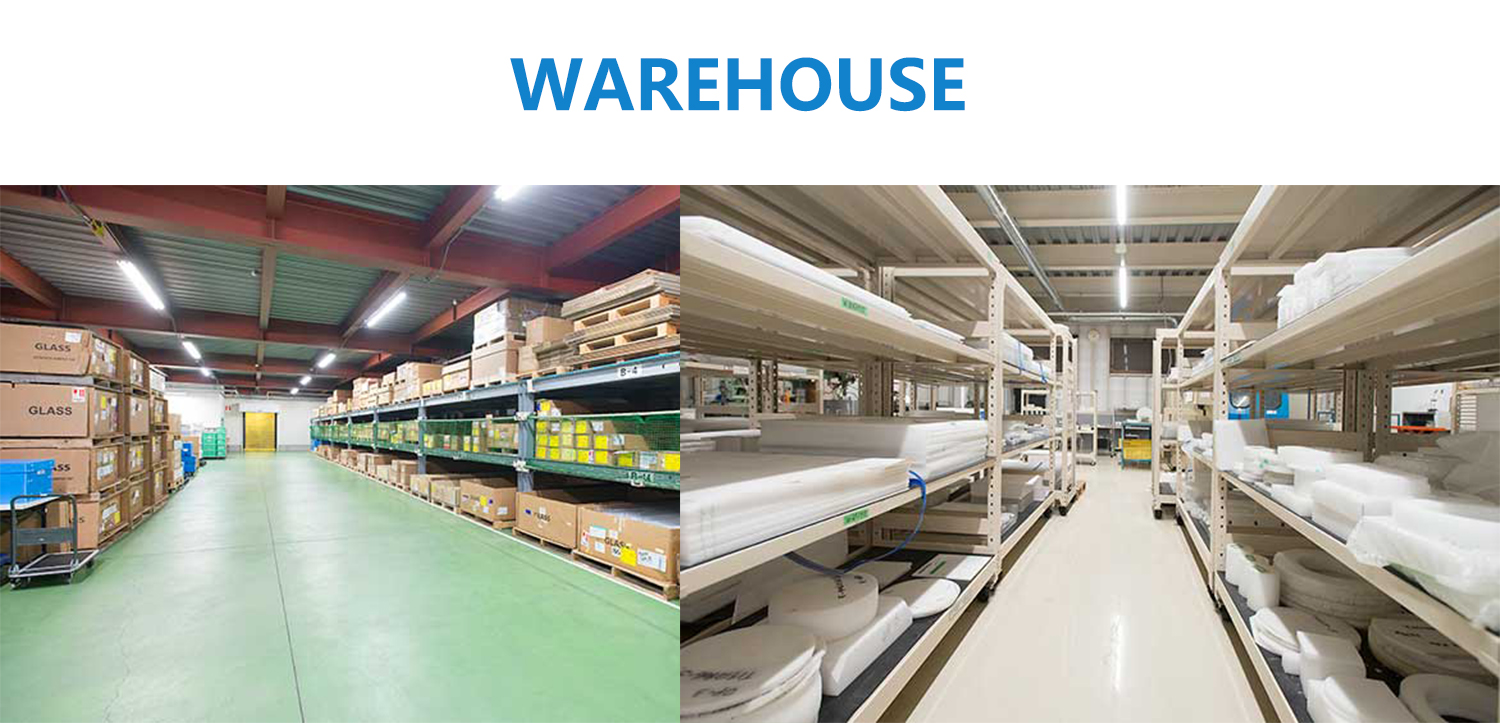
Graphite three-petal crucibles play a pivotal role in semiconductor crystal growth, offering unmatched thermal, chemical, and structural advantages. Their advanced design, featuring a CVD SiC coating, ensures exceptional durability and resistance to harsh environments. The low thermal expansion coefficient allows these crucibles to withstand rapid temperature changes without compromising their integrity. As the semiconductor industry grows, projected to reach $2.5 billion by 2032 at a CAGR of 8.5%, these crucibles remain indispensable for producing high-quality, defect-free materials. Their precision and reliability make them a cornerstone of modern semiconductor manufacturing.
Key Takeaways
- Graphite three-petal crucibles provide exceptional thermal conductivity, ensuring uniform heat distribution essential for defect-free semiconductor crystal growth.
- Their superior chemical resistance allows them to withstand harsh environments, preserving the purity of materials and extending their operational lifespan.
- The low thermal expansion coefficient of these crucibles minimizes the risk of cracking during rapid temperature changes, maintaining structural integrity.
- Graphite crucibles enhance manufacturing efficiency by reducing energy waste and operational costs, making them a cost-effective choice for semiconductor production.
- Their versatility makes them suitable for both laboratory research and large-scale industrial applications, ensuring consistent performance across various environments.
The advanced CVD SiC coating on graphite crucibles significantly boosts their durability, providing reliable performance even in demanding conditions.
Choosing graphite over ceramic or metal alternatives ensures better thermal stability and chemical inertness, crucial for high-quality semiconductor manufacturing.
Unique Properties of Graphite Three-Petal Crucibles
Exceptional Thermal Conductivity
Graphite three-petal crucibles exhibit remarkable thermal conductivity, a critical property for semiconductor crystal growth. This feature ensures uniform heat distribution across the crucible, which is essential for maintaining consistency during the crystal formation process. Uneven heating can lead to defects in the material, compromising its quality and performance. By facilitating even temperature control, these crucibles help produce defect-free semiconductor crystals.
Additionally, their ability to reduce thermal stress enhances the reliability of the manufacturing process. Thermal stress often arises from rapid temperature changes, which can cause cracks or deformations in less durable materials. The high thermal conductivity of graphite minimizes this risk, ensuring the structural integrity of both the crucible and the materials being processed.
Superior Chemical Resistance
The chemical resistance of graphite three-petal crucibles makes them indispensable in semiconductor manufacturing. These crucibles withstand exposure to harsh chemicals commonly used in the production process, such as acids and alkalis. Their inert nature prevents reactions with these substances, preserving the purity of the materials being processed.
Even in high-temperature and corrosive environments, these crucibles maintain their performance. This resilience ensures that they can endure the demanding conditions of semiconductor growth without degradation. Their ability to resist chemical erosion extends their lifespan, making them a cost-effective choice for manufacturers.
Structural Integrity and Durability
Graphite three-petal crucibles are engineered to resist deformation under extreme thermal and mechanical stress. This structural integrity is vital for applications requiring precision and reliability. The crucibles retain their shape and functionality even when subjected to rapid heating and cooling cycles, ensuring consistent performance.
One of the standout features contributing to their durability is the CVD SiC coating. This advanced coating enhances the crucible’s resistance to wear and tear, further extending its operational life. The combination of robust design and innovative materials makes these crucibles a reliable solution for high-performance semiconductor applications.
Low Thermal Expansion Coefficient
The Graphite three-petal crucible demonstrates an exceptionally low thermal expansion coefficient, a property that ensures its resilience under rapid temperature fluctuations. This characteristic allows the crucible to endure sudden heating and cooling cycles without sustaining damage. In semiconductor manufacturing, where precise thermal control is critical, this feature minimizes the risk of cracking or deformation, maintaining the structural integrity of the crucible throughout the process.
Dimensional stability is another significant advantage provided by the low thermal expansion coefficient. During semiconductor crystal growth, even minor dimensional changes can compromise the quality of the final product. The crucible’s ability to retain its shape under extreme thermal conditions ensures consistent performance, enabling the production of defect-free semiconductor materials. This stability is particularly valuable in high-temperature applications, where precision and reliability are paramount.
The combination of thermal stability and durability makes these crucibles indispensable for industries requiring high-performance materials. Their ability to withstand intense thermal stress while maintaining their structural properties highlights their superiority over alternative materials. This unique attribute positions the Graphite three-petal crucible as a cornerstone in advancing semiconductor technology.
Advantages of Graphite Three-Petal Crucibles in Semiconductor Applications

Precision in Crystal Growth
The Graphite three-petal crucible plays a vital role in achieving precision during semiconductor crystal growth. Its advanced design ensures controlled and uniform crystal formation, which is essential for maintaining the structural integrity of semiconductors. Uniform growth minimizes the risk of defects, resulting in high-quality materials that meet the stringent demands of the semiconductor industry.
Impurities can compromise the performance of semiconductor devices. The crucible’s inert nature prevents contamination during the growth process, safeguarding the purity of the crystals. This capability ensures that manufacturers can produce semiconductors with superior electrical properties and reliability.
Scientific Research Findings: According to studies, high-purity graphite reduces contamination risks and enhances the reliability of semiconductor materials, making it indispensable for precision-driven applications.
High Purity Standards
Graphite’s inherent inertness ensures that the Graphite three-petal crucible meets the high purity standards required in semiconductor manufacturing. During processing, the crucible resists chemical reactions that could introduce impurities into the material. This property is critical for maintaining the electrical and structural integrity of semiconductors.
The semiconductor industry demands materials that adhere to strict purity requirements. The crucible’s ability to maintain its composition under extreme conditions aligns with these standards. This ensures that the final products exhibit consistent performance and reliability, even in advanced electronic applications.
Scientific Research Findings: Studies highlight that graphite components improve product quality by ensuring high purity and reliability, which are essential for semiconductor devices.
Efficiency and Cost-Effectiveness
The durable design of the Graphite three-petal crucible significantly reduces the need for frequent replacements. Its resistance to wear and tear, even in high-temperature and chemically aggressive environments, extends its operational lifespan. This durability translates into cost savings for manufacturers, as fewer replacements lower overall production expenses.
Graphite’s excellent thermal conductivity enhances energy efficiency during semiconductor growth processes. By distributing heat uniformly, the crucible minimizes energy waste and optimizes resource utilization. This energy conservation not only reduces operational costs but also supports sustainable manufacturing practices.
Scientific Research Findings: Reports indicate that graphite crucibles contribute to energy conservation due to their high thermal conductivity and low thermal expansion, making them an efficient choice for high-temperature operations.
Versatility in Applications
Suitable for both laboratory research and industrial-scale production
Graphite crucibles demonstrate exceptional adaptability, making them indispensable in both laboratory research and large-scale industrial production. In research settings, their precision and reliability enable scientists to conduct controlled experiments with consistent results. These crucibles support the meticulous growth of semiconductor crystals, ensuring that researchers can explore innovative materials and processes without compromising quality.
In industrial-scale production, graphite crucibles excel due to their ability to handle high volumes while maintaining performance. Their structural integrity and thermal stability allow manufacturers to produce semiconductors efficiently, meeting the growing demand for advanced electronics. According to the DataIntelo Report, the surge in semiconductor manufacturing, driven by advancements in technology, has amplified the need for high-performance graphite components. This versatility ensures that graphite crucibles remain a cornerstone in both experimental and commercial applications.
Performs reliably across various environments, including high-temperature and chemically aggressive conditions
Graphite crucibles perform consistently in diverse and challenging environments. Their high thermal conductivity ensures uniform heat distribution, even in extreme temperatures, which is critical for semiconductor growth. The AEM Deposition Website highlights that graphite’s low thermal expansion minimizes the risk of thermal shock and cracking during rapid temperature changes, further enhancing its reliability.
In chemically aggressive conditions, graphite crucibles maintain their structural integrity and resist corrosion. Their inert nature prevents reactions with harsh chemicals, preserving the purity of the materials being processed. This resilience makes them suitable for environments where other materials might fail. The XR Graphite Website emphasizes that graphite products improve production efficiency and ensure the reliability of semiconductor devices, underscoring their importance in demanding applications.
The ability to perform reliably across such varied conditions positions graphite crucibles as an essential tool in the semiconductor industry. Their adaptability and durability ensure that they meet the rigorous demands of both research and industrial environments, solidifying their role in advancing semiconductor technology.
Comparison to Alternative Materials

Graphite vs. Ceramic Crucibles
Graphite crucibles surpass ceramic crucibles in several critical aspects, making them a preferred choice for semiconductor applications. Thermal conductivity stands out as a key advantage of graphite. While ceramic crucibles exhibit moderate thermal conductivity, graphite excels by ensuring rapid and uniform heat distribution. This property is essential for maintaining consistency during high-temperature processes like semiconductor crystal growth.
Ceramic crucibles often struggle with thermal shock resistance. Rapid temperature changes can cause cracks or fractures in ceramics, compromising their structural integrity. In contrast, graphite crucibles withstand sudden heating and cooling cycles without damage, ensuring reliability in demanding environments. Additionally, graphite’s chemical resistance outperforms ceramics, which are more prone to degradation when exposed to harsh chemicals used in semiconductor manufacturing.
Graphite vs. Metal Crucibles
Graphite crucibles offer distinct advantages over metal crucibles, particularly in high-temperature and chemically aggressive conditions. Metals, though durable, are susceptible to oxidation at elevated temperatures. This oxidation can lead to contamination of the materials being processed, which is unacceptable in semiconductor manufacturing. Graphite, being chemically inert, eliminates this risk and ensures the purity of the final product.
Metal crucibles also lack the thermal stability that graphite provides. At high temperatures, metals may deform or lose their structural integrity, whereas graphite maintains its shape and performance. Furthermore, graphite crucibles are more cost-effective due to their durability and longer lifespan. Their ability to resist wear and tear reduces the need for frequent replacements, making them a more economical choice for manufacturers.
Advantages of Semicera’s Graphite Crucibles
Semicera’s graphite crucibles stand out due to their innovative features and superior performance. The inclusion of a CVD SiC coating enhances their durability, providing an additional layer of protection against wear and chemical corrosion. This advanced coating ensures that the crucibles perform reliably even in the most challenging environments.
The isotropic material properties of Semicera’s crucibles further set them apart. These properties guarantee uniform performance across all dimensions, which is crucial for precision-driven applications like semiconductor crystal growth. Additionally, the crucibles boast high density, purity, and strength, ensuring exceptional thermal conductivity and structural integrity. These attributes make Semicera’s graphite crucibles a top-tier choice for industries requiring high-performance materials.
Key Insight: Graphite crucibles, particularly those from Semicera, combine advanced material science with innovative design to deliver unmatched performance in semiconductor manufacturing.
Graphite three-petal crucibles, like those from Semicera, have become essential in semiconductor growth due to their advanced properties and innovative engineering. Their ability to deliver precision ensures the production of defect-free materials, while their inert nature maintains the purity required for high-performance applications. These crucibles also enhance efficiency by reducing energy waste and operational costs. As the semiconductor industry continues to expand, Semicera’s dedication to quality and innovation guarantees that their crucibles will meet the evolving demands of cutting-edge technology, solidifying their role as a cornerstone in this critical sector.
FAQ
What makes graphite three-petal crucibles superior to ceramic and metal alternatives?
Graphite three-petal crucibles excel due to their exceptional thermal conductivity, chemical resistance, and durability. Unlike ceramic crucibles, which struggle with thermal shock, graphite handles rapid temperature changes without cracking. Metal crucibles, on the other hand, are prone to oxidation at high temperatures, which can lead to contamination. Graphite’s inert nature and structural integrity make it a reliable choice for high-temperature and chemically aggressive environments.
Why is thermal conductivity important in semiconductor crystal growth?
Thermal conductivity ensures uniform heat distribution, which is critical for consistent crystal growth. Uneven heating can cause defects in the semiconductor material, compromising its quality. Graphite crucibles, with their high thermal conductivity, maintain even temperatures throughout the process, reducing the risk of imperfections and ensuring superior results.
How does the CVD SiC coating enhance the performance of graphite crucibles?
The CVD SiC coating significantly improves the durability and lifespan of graphite crucibles. This advanced coating provides an additional layer of protection against wear, chemical corrosion, and high-temperature stress. It ensures that the crucible performs reliably even in the most demanding semiconductor manufacturing environments.
Are graphite crucibles cost-effective compared to other materials?
Yes, graphite crucibles are highly cost-effective. Their durability reduces the need for frequent replacements, lowering long-term operational costs. Additionally, their excellent thermal conductivity enhances energy efficiency, minimizing energy waste during semiconductor growth processes. These factors make graphite crucibles an economical choice for manufacturers.
Can graphite crucibles be used in both laboratory and industrial settings?
Graphite crucibles are versatile and suitable for both laboratory research and industrial-scale production. In laboratories, their precision and reliability support controlled experiments. In industrial settings, their ability to handle high volumes and extreme conditions ensures efficient and consistent performance. This adaptability makes them indispensable across various applications.
How do graphite crucibles maintain purity during semiconductor manufacturing?
Graphite’s inert nature prevents chemical reactions with the materials being processed, ensuring no contamination occurs. This property is crucial for maintaining the high purity standards required in semiconductor manufacturing. The result is defect-free materials with superior electrical and structural properties.
What role does the low thermal expansion coefficient play in graphite crucibles?
The low thermal expansion coefficient allows graphite crucibles to withstand rapid heating and cooling cycles without damage. This property ensures dimensional stability, which is essential for maintaining the structural integrity of the crucible and the quality of the semiconductor crystals being produced.
How do graphite crucibles compare to ceramic crucibles in terms of handling?
Graphite crucibles are lightweight and easier to handle compared to ceramic alternatives. Their resistance to thermal shock and ability to maintain structural integrity under extreme conditions make them a more convenient and reliable option for both laboratory and industrial use.
Why are graphite crucibles ideal for high-temperature applications?
Graphite crucibles perform exceptionally well in high-temperature environments due to their heat resistance and CVD SiC coating.
What sets Semicera’s graphite crucibles apart from others?
Semicera’s graphite crucibles stand out due to their innovative features, such as the CVD SiC coating and isotropic material properties. These attributes ensure uniform performance, enhanced durability, and superior thermal conductivity. Their high density, purity, and strength make them a top-tier choice for industries requiring high-performance materials.